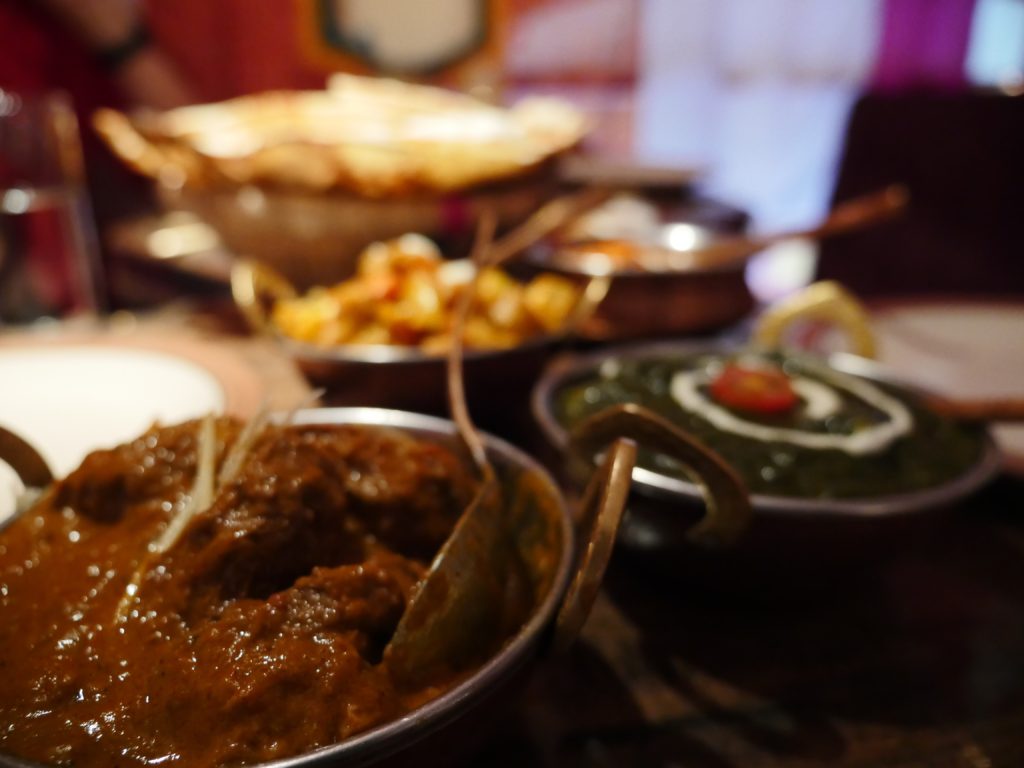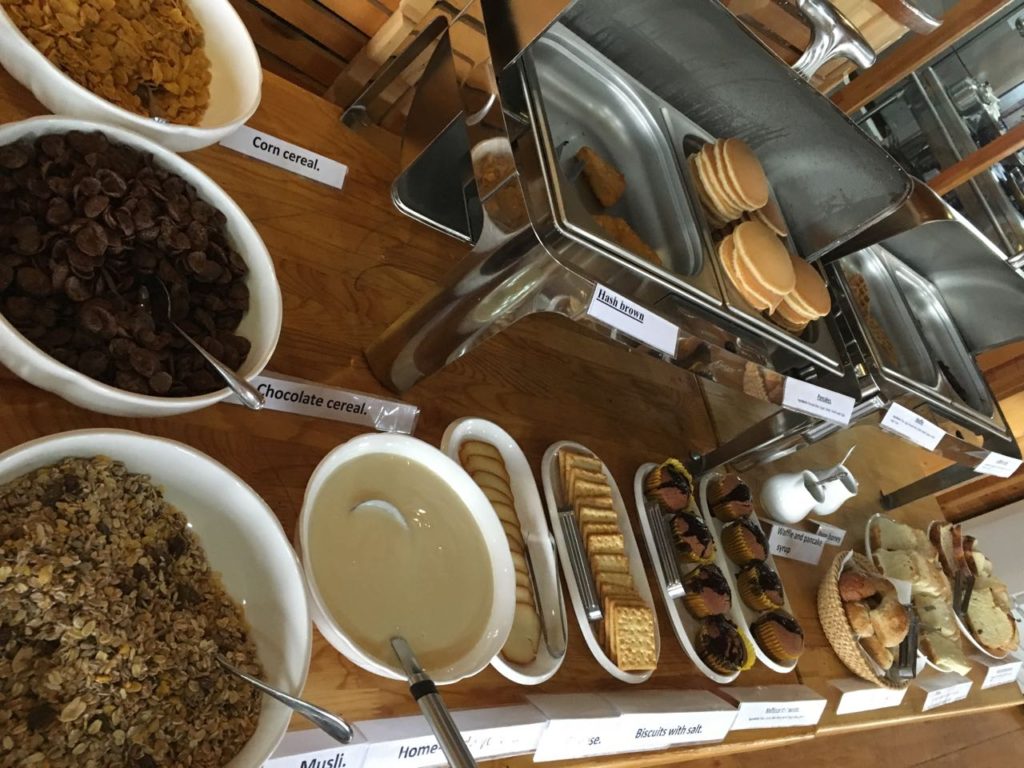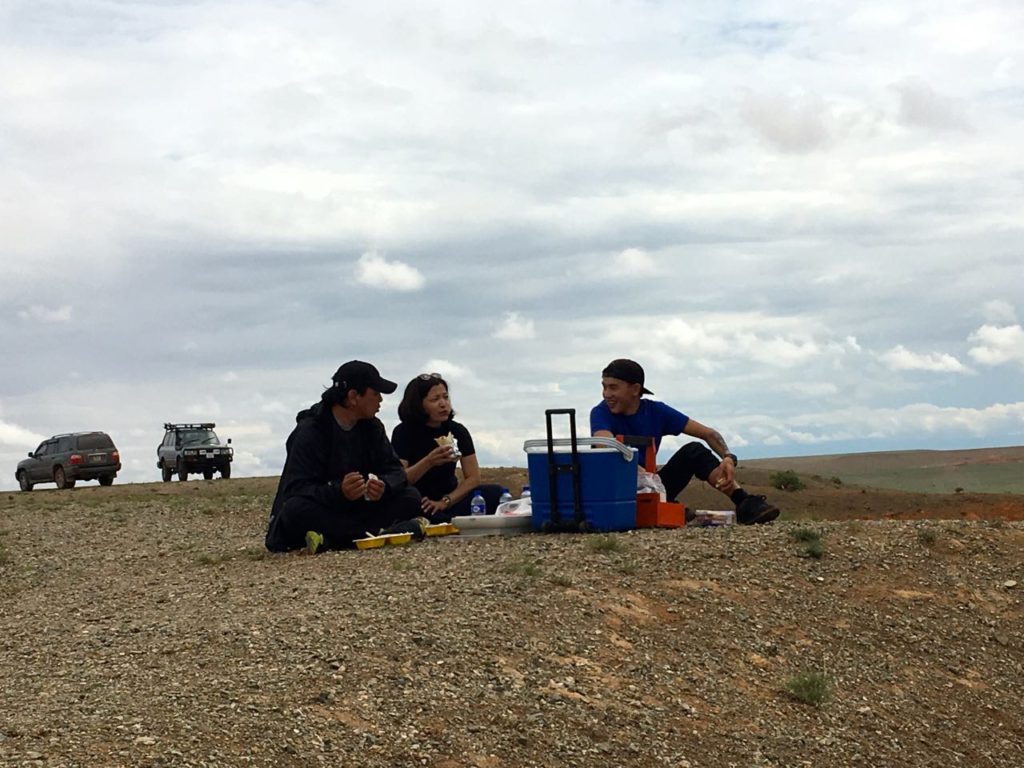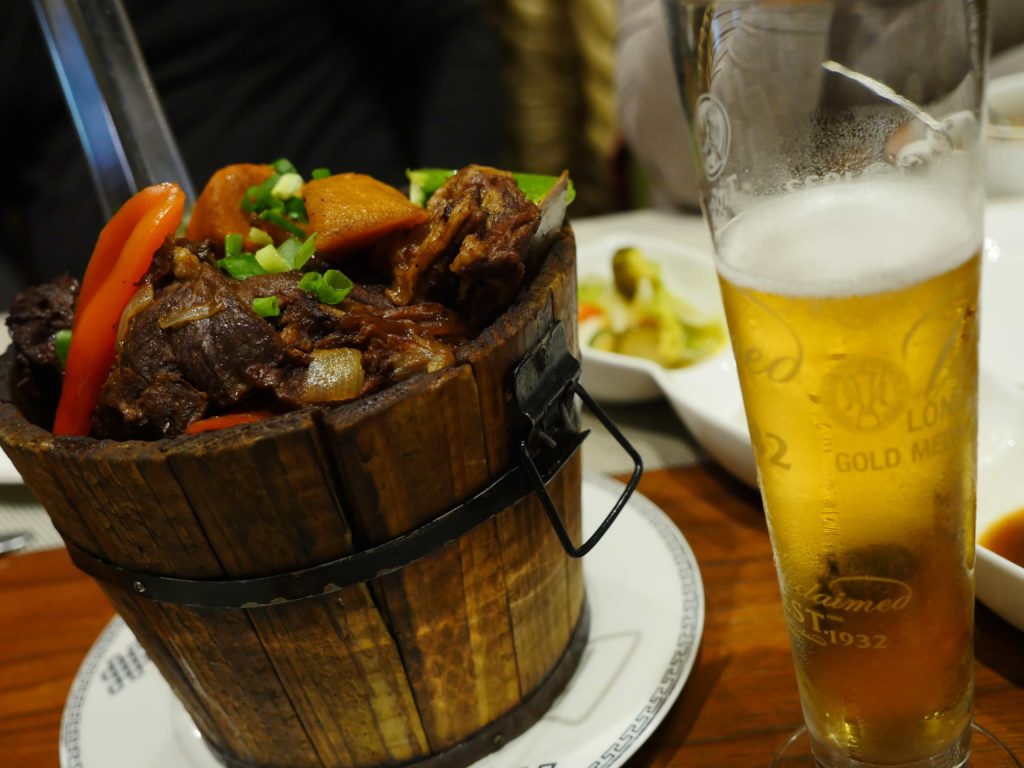Sandwiched between Russia and China, Mongolia is a huge country with vast open grasslands, mountains and deserts. Harsh cold winters and gusty winds make it difficult to grow much here. Therefore, the nomadic Mongol diet relies mostly on animal products, such as meat, cheese, yogurt and milk.
So what to expect to eat as you travel through Mongolia?
The capital city of Ulaanbaatar (UB) is comparable to any metropolis in Central Asia. Here you will find all sorts of restaurants, cafes, bars and grocery stores. There are traditional Mongolian places, as well as tourist-friendly international restaurants serving American, Russian, Irish, Japanese, and Italian food. Korean cuisine is perhaps the most popular as many Korean tourists visit Mongolia (it is an easy 3 hour direct flight from Seoul). I even found a few Indian/ Hazara restaurants in UB.

A visit to the State Department Grocery Store in UB gives a good perspective on the produce that is imported from abroad. There is generally a small section of fresh organic Mongolian produce, which is more expensive than it’s Chinese counterpart. The variety of fruits and vegetables is plentiful, though not as appealing as I am use to. Think overripe bananas, pale red apples, softening grapes. Isles of sausages and cheese from Russia can easily be found. There are plenty of packages food though – cookies, chocolates, nuts, chips – practically everything you can think of. The cooked food section boasts kimchi, fried snacks and noodles, favoring the spicy tastebuds of the locals.
Outside of UB, there are supermarkets selling all of needed essentials. In some of the smaller towns that I visited, the amount of produce diminished significantly. Here street vendors could be found selling freshly harvested green onions, peaches and watermelon.
While staying at luxury tourist ger camps, we were served three meals daily. Breakfast typically consisted of an assortment of bakery items (bread, cakes, pancakes, waffles), cheese, yogurt, cereal, tea, canned fruits and eggs made to order. I don’t think Mongols are very good bakers as most of the cakes were very dry and flavorless. Some of the places only had instant coffee.

Lunches were generally picnic style as we were out sightseeing at remote areas. The hotel would pack a lunch box – wraps, salads, sandwiches, noodles, etc. that we carried with us.

Sometimes we went to traditional Mongolian restaurants, which I really enjoyed. At the 13th Century National Park, we sat on the floor, watched live performances, while eating delicious Khuushuur stuffed with ground beef (and a vegetarian version for me). This is also the most popular thing to eat (like a hot dog) at the Naadam festival.
Modern Nomads in UB is always packed with visitors who want to try traditional Mongolian dishes in the city. Buckets of grilled meats (Khorkhog) along with chilled beer is the perfect campground treat. Strangely they had chewing gum listed as a snack on the menu!
It is important to note that the Mongolian diet consists mainly of meat (beef, horse, goat, sheep, yak, marmot and camel) as it helps retain fat and heat during the long winters. Though vegetarians wouldn’t have survived here in the past, today there are many meat-free options for those traveling through the country.

When we were out visiting nomadic camps, we were offered hot milk tea known as Süütei Tsai (made from horse, camel or cow milk), along with local fried cookies, Boortsog and dried cheese, Aaruul. It is customary to accept the offerings from your hosts, even if you are not hungry.

At dinner, we enjoyed international dishes, such as fresh salad with tomatoes, olives and cheese at Dream Terelj Lodge; pizza at Peace Pub Restaurant; grilled chicken or fish with roasted potatoes or french fries at Dream Gobi Ger Lodge.
All the restaurants served alcohol, beer and wine; vodka being the most popular drink. There are many Mongolian brewed vodkas (many of them named Chinggis) and they are actually very good.
I discovered that there are no Mongolian dessert except for sweet dried fermented cheese, but with the international influence, bakeries have popped up in the city. One that I frequented was Caffe Bene that served gelato, cakes, coffee and juices, and Grand Khaan Irish Pub for drinks and desserts.
Read Mongolian Cuisine Is a Carnivore’s Dream Come True on MilesAway blog.